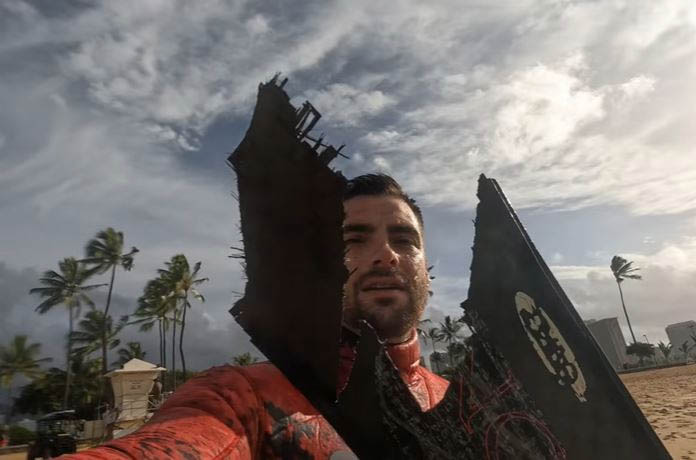A viral video showing an extremely close call between a diver and a fishing boat is an excellent reminder about the value of redundancy on the water.
30-year-old diver Christopher Lastra was filming himself spearfishing off Magic Island in Hawaii last week when he resurfaced only to find himself staring directly at the bow of an oncoming hull. Thankfully the boat narrowly missed Lastra and he was able to return to shore, but the reasons behind the mishap serve as a helpful lesson to boaters. Redundancy saves lives.
“My buoy got swept away with the current last week, and I had scheduled to pick one up tonight, however, I went for a short shallow reef dive thinking I’d be ok,” Lastra says in a post on social media.
“Bad decision to dive in high-traffic area. As I was hunting Mu and Uhu, I hear a boat coming. I should have stayed under the water, but shot up to the surface to get eyes on it.”
“Unfortunately, the boat at that time was already within 5 yards of me and headed straight towards me. I yell ‘whoa’ as I push off the boat to get away from the centre where I knew the propeller would be. Even though boats are supposed to go around the channel marker, I accept 100 per cent responsibility since I wasn’t using a dive buoy.”
A big credit goes to the captain of the Wind Whisperer, who immediately kills the engine and searches the water before spotting Lastra some distance away. He then circles back to check on the diver and offer his help, which Lastra politely declines, choosing instead to return to shore. Lastra, for his part, admirably admits his fault and assures the captain that he was to blame for the incident. That’s called being a good captain.
So, what are the lessons here? There are many:
First and foremost, if you’re going on the water, follow all regulations. If you’re diving, use the proper buoy or diving flag. Whether that means bringing two dive flags with you when you go snorkeling, or keeping duplicates and triplicates of critical equipment on board or in your vehicle can make all the difference.
The second lesson is to be prepared. All boaters should maintain a critical equipment checklist that ensures they are always carrying the necessary gear with them. This ensures that not only do you have all the right gear onboard (including duplicates of key items), but that’s its been checked recently to make sure it’s in good order.
The third lesson is for boaters specifically. While in this instance it’s unknown if the captain of Wind Whisperer even saw Lastra before the impact, it’s a reminder of the value of learning how to stop your boat. Spend some time on open water practicing techniques like evasive maneuvers, stopping/slowing your boat, and pulling up your propeller. Is redundancy expensive? Yes, but ask the CEO of any company why they invest so heavily in failsafe systems and they’ll give a simple answer: It’s necessary. If a system fails, the failsafe is there to maintain order and protect critical data or infrastructure. The same thing applies to boating — you can’t risk having an important item fail and put your life or the lives of your guests in danger, so keep backups of critical components.
That includes everything from PFDs, to first aid kits, to EPIRBs, to your compass, and more. If its a life-saving piece of equipment- buy two. One of the most common phrases you’ll hear in military logistics is: ‘two is one, and one is none.’ Apply that to boating, as well. There’s a reason it’s a common phrase.
“Your life flashes before your eyes when you face death, but for me, I was just thinking I’m an idiot,” Lastra told Hawaii News Now. “I should have had a buoy out here. I knew the law and I just decided not to bring it.”
Sometimes we get lucky. Sometimes we don’t. Don’t put anything to chance.







